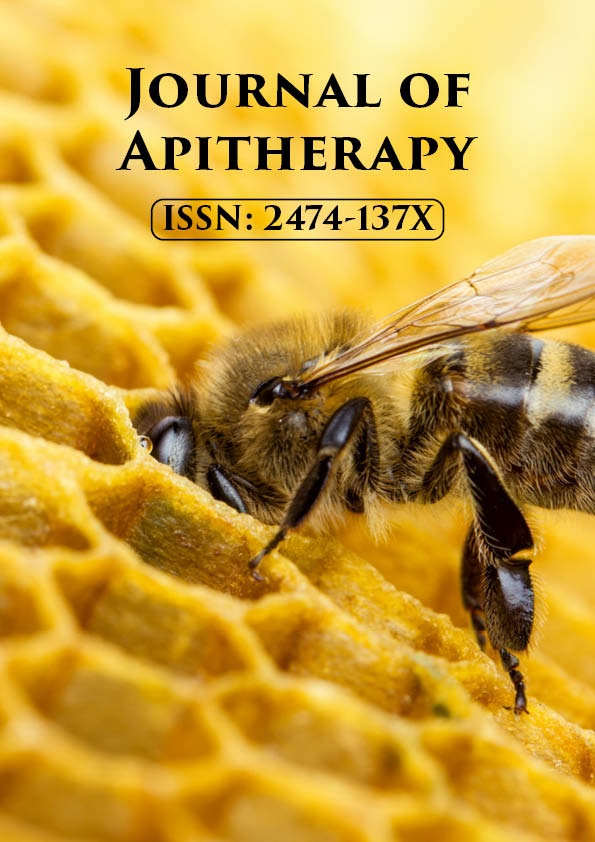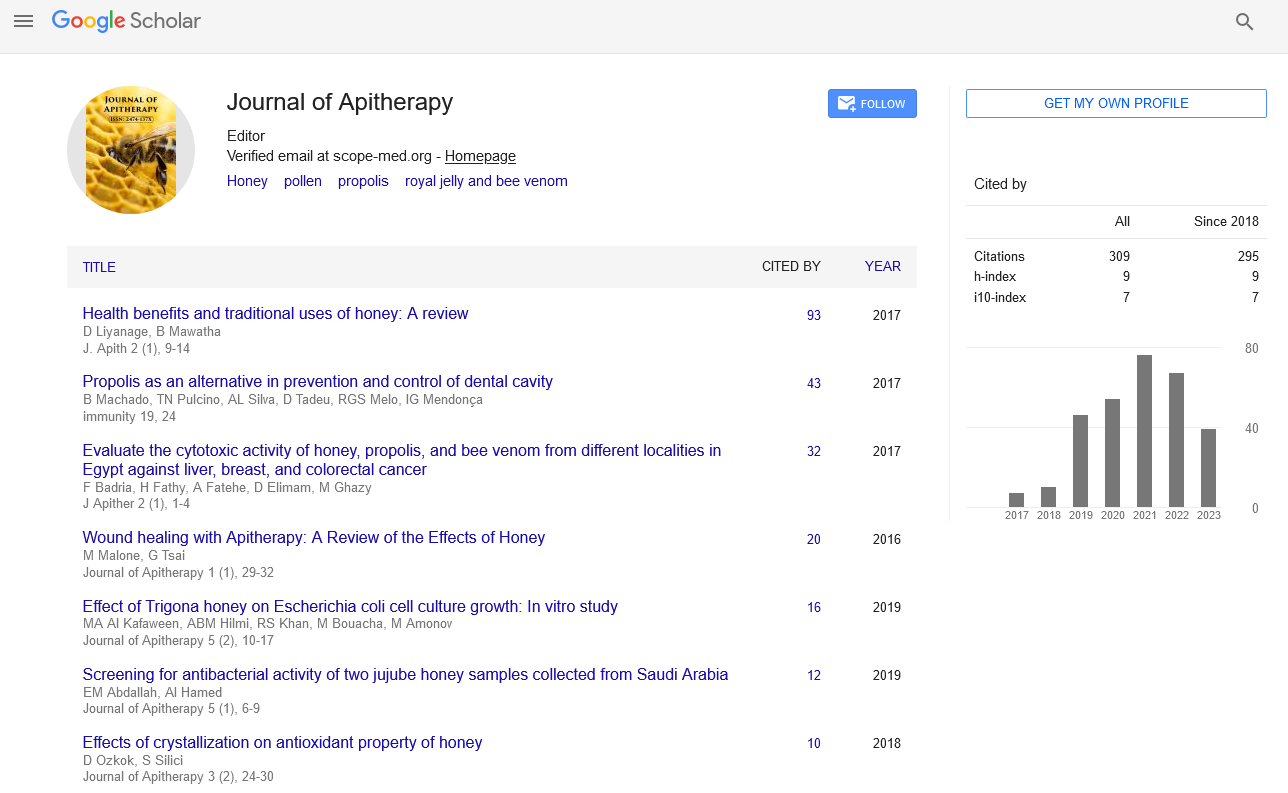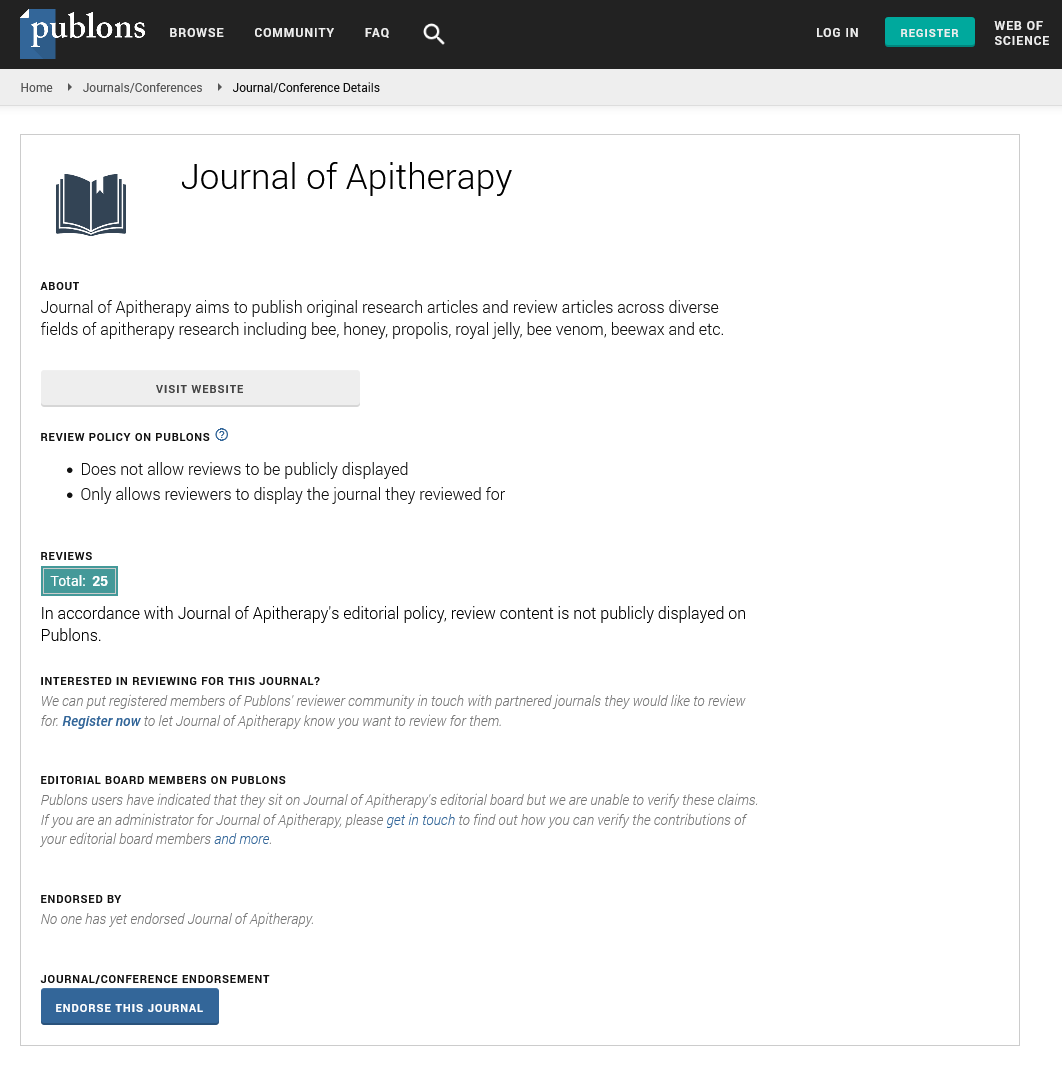Perspective Article - Journal of Apitherapy (2022)
The Health Benefits of Honey
Etil Guzel*Etil Guzel, Department of Pharmacognosy, Yeditepe University, Istanbul, Turkey, Email: etil.ariuenu@yeditepe.edu.tr
Received: 03-Jan-2022, Manuscript No. JAPITHERPAY-22-52178; Editor assigned: 05-Mar-2022, Pre QC No. JAPITHERPAY-22-52178 (PQ); Reviewed: 19-Jan-2022, QC No. JAPITHERPAY-22-52178; Revised: 24-Jan-2022, Manuscript No. JAPITHERPAY-22-52178 (R); Published: 31-Jan-2022
Description
Honey is a natural product that contains flavonoids and phenolic acids and has been used for medicinal purposes since ancient times. Honey possesses antioxidant and anti-inflammatory effects, despite the fact that its bioactive potential is tied to its composition, which varies depending on the botanical origin. As a result, honey, either used alone or in combination with conventional medication, could be beneficial in the treatment of chronic disorders linked to oxidative stress and inflammation. Obesity is a metabolic condition marked by visceral fat accumulation. Honey is one of the most widely used foods in the world as a natural, healthful sweetener. When honeybees take nectar from poisonous plants including Rhododendron, Coriaria arborea and Tripterygium wilfordii, Hook F., food safety concerns arise. Natural plant poisons are present in such honey. After swallowing poisonous honey, humans may experience intoxication symptoms, which can be lethal in some situations. As a result, poisonous honey is an often-overlooked public health risk. Grayanotoxins, triptolides, tutin and pyrrolizidine alkaloids, among other plant toxins, have been found in poisonous honey. Honey is one of the most popular functional foods with evidence of its use dating back to the dawn of civilisation. Many religions and traditional remedies support its health-protective properties. Honey is used in Unani medicine to treat a variety of ailments, including wound healing, anti-inflammatory and anti-diabetic. Honey is gaining favour over sugar in the modern day due to its numerous health benefits and low glycemic index. With scientific evidence, this article seeks to provide a complete description of honey’s biological functions and prospective medicinal purposes. Honey is a natural health tonic that is used to treat a variety of ailments. Probiotics are live microorganisms that, when given in sufficient doses, boost the host’s health. Probiotic bacteria can change the composition of the microbiota and provide more health advantages when combined with other diet components. Honey, a carbohydrate-rich natural component, could be used in clinical settings or integrated into tissue-engineered platforms. The antibiotic’s clinical utility was severely harmed as a result of its research. However, due to the rise in antibiotic resistance, there has been a greater demand for alternate therapeutic methods. Honey’s physical properties also make it difficult to use it directly in an affected area. Honey could be included in a hydrogel composition to overcome these constraints. Honey has long been utilised as an adjuvant and supplement in the treatment of diabetes mellitus in complementary and alternative medicine, particularly in Indian Ayurvedic medicine. Honey has reawakened attention in the context of diabetes treatment in recent years, thanks to the increased availability of evidence-based pharmacological and clinical studies demonstrating its health advantages. Regarding the traditional usage of honey in diabetes mellitus, there are differing viewpoints. The current study examines diverse research hypotheses, raised issues and misconceptions about the effects of honey in diabetes care, as well as existing challenges and future prospects. A full critical analysis was conducted by looking into the traditional anti-diabetic claims made by honey, as well as published reports found in online databases.
Copyright: © 2022 The Authors. This is an open access article under the terms of the Creative Commons Attribution NonCommercial ShareAlike 4.0 (https://creativecommons.org/licenses/by-nc-sa/4.0/). This is an open access article distributed under the terms of the Creative Commons Attribution License, which permits unrestricted use, distribution, and reproduction in any medium, provided the original work is properly cited.







